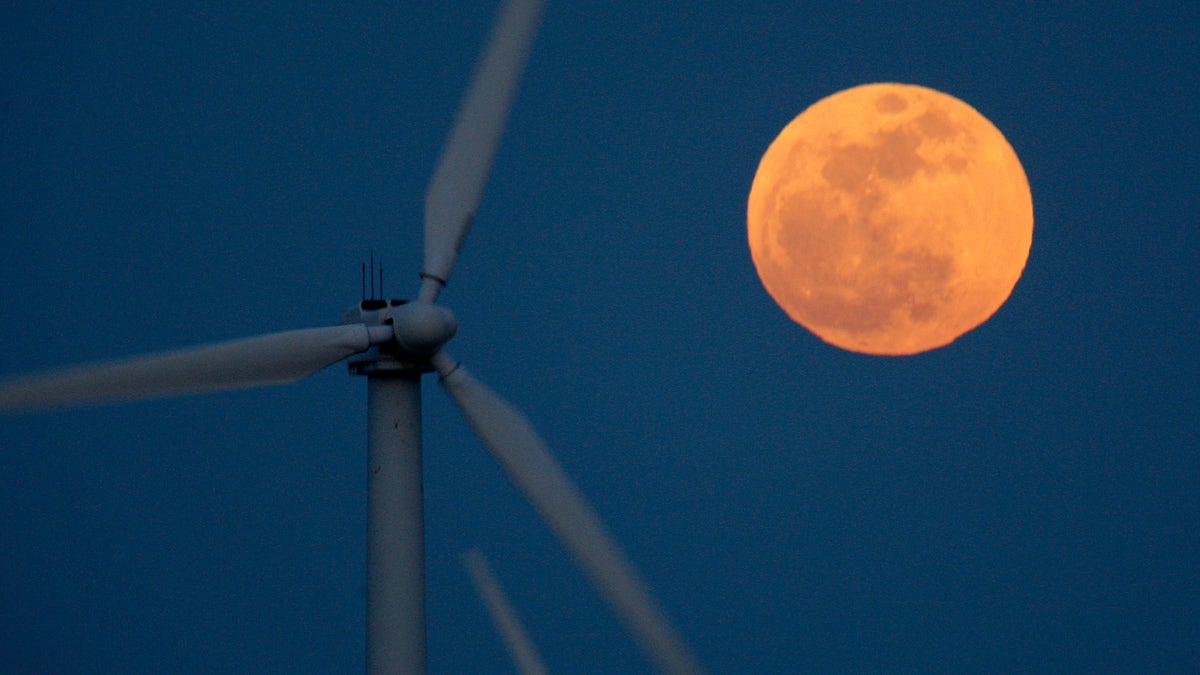
PALM SPRINGS, CA - MAY 5: A perigee moon, or supermoon, rises behind wind turbines on May 5, 2012 near Palm Springs, California. The moon appears especially big and bright during this once-a-year cosmic event as the full moon is at its closest to the Earth in its elliptical orbit. The perigee side of its orbit is about 31,000 miles closer than the opposite, or apogee, side. The bright light of the full moon also hides all but the brightest meteors of the Eta Aquarid meteor shower, the remnant debris trail of Halley's Comet. (Photo by David McNew/Getty Images) (2012 Getty Images)
Heads up — and enjoy. The full moon on Saturday will appear to be unusually big. In fact, it will be a supermoon, the first of three to adorn the sky this year.
Full moons vary in size because of the oval shape of the moon's orbit. The moon follows an elliptical path around Earth with one side ("perigee") about 30,000 miles closer than the other ("apogee").
A supermoon results when there's a full moon as the satellite makes its closest approach to the Earth.
A "perigee moon," as it is technically called, shows the largest apparent size of the lunar disk as seen from Earth.
Two other full moons this summer, on Aug. 10 and Sept. 9, are also supermoons. The one on Aug. 10 will be the biggest of the year, as the moon will be closest to Earth on that day.
It's not all that unusual to have a supermoon. There were three in a row last year. "Generally speaking, full Moons occur near perigee every 13 months and 18 days, so it's not all that unusual," said Geoff Chester of the U.S. Naval Observatory as quoted by NASA on its website.
"In fact, just last year there were three perigee Moons in a row, but only one was widely reported."
The best time to look at the full moon, experts say, is when it's hanging low, near the horizon.
The effects on Earth from a supermoon are minor. According to the most detailed studies, NASA explains, it should not affect the internal energy balance of the Earth since there are lunar tides every day.
The Associated Press contributed to this report.
Follow us on twitter.com/foxnewslatino
Like us at facebook.com/foxnewslatino
